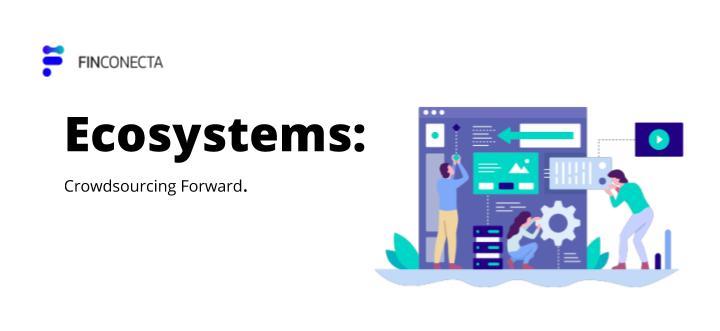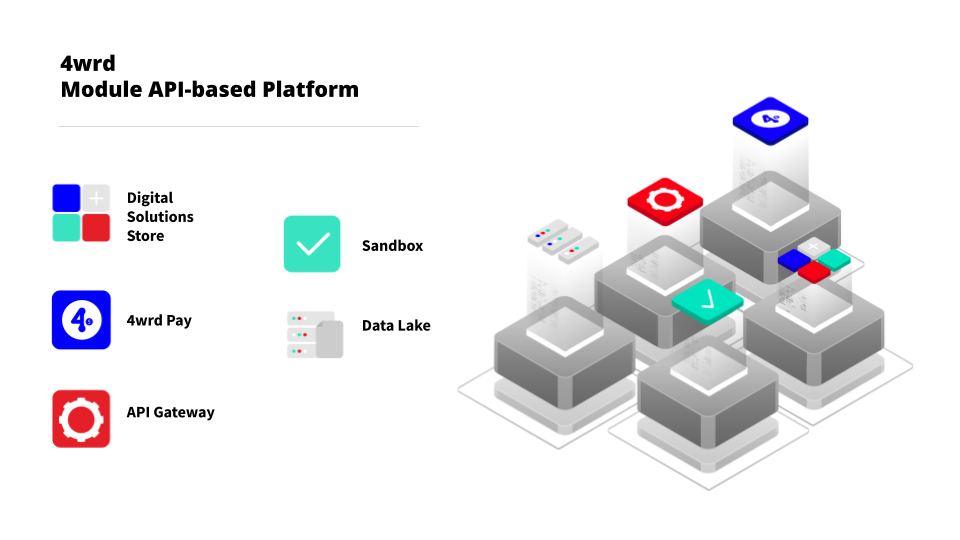
Ecosystems are the new black
While a few years ago ecosystems were thought to be relevant for only a few industries and regions, in the last two years we have seen dominant ecosystem players, startups and incumbents, accelerate their activities all over the world. This trend is likely to intensify in the post COVID-19 world we anticipate, as digital interactions are an important step-change in both business-to-business and business-to-customer activities: consumers are looking for more end-to-end journeys across products and services, and organizations are looking to rapidly reinvent their value proposition for the “next normal”.
This is a societal shift, propelled by exponential technology.
An April 2020 survey by McKinsey shows the spike in online sales will continue to some extent even after the crisis is over, and that 71 percent of consumers are ready for integrated, ecosystem offerings.
Business-to-business interactions are changing too, as businesses rated digitally-enabled interactions with business-to-business customers as being twice as important as traditional methods, a 30 percent increase compared to the start of the crisis.
Many companies along a variety of verticals are actively considering the ecosystem business model given its value-generation potential: growing the core business, expanding the network and portfolio, and generating revenues from new products and services. They definitely aspire to be part of an integrated network economy, that could represent a global revenue pool of $60 trillion in 2025 with a potential increase in total economy share from about 1 to 2 percent today to approximately 30 percent by 2025.
Ecosystem in today’s business world
What is an ecosystem in business?
An ecosystem is an interconnected set of services enabling users to fulfil a variety of needs in one integrated experience. The true new component of this upgraded wave is the digital connectivity that brings ecosystems into true life, propelling companies and the economy as a whole to unexpected new levels.
Ecosystems can be leveraged to:
- Act as gateways that reduce the friction customers encounter when they have to switch between related services. Users can acquire a variety of products and services by having access to a single platform.
- Use network effects for strategic scale advantage.
- Integrate data to create value-added products and services, and superior customer experience.
How spread (and tested) is this ecosystem strategy?
Leading companies are increasingly offering an interconnected set of services—from Alibaba offering a broad ecosystem of lifestyle services (including retail, payments, credit scoring), to Apple launching an AppleCard with Goldman Sachs (expanding on ApplePay), and BMW/Daimler creating a shared mobility ecosystem with a number of startups (Car2Go, moovel, Mytaxi) under the Your Now brand.
To determine their ecosystem strategy, companies shall assess market characteristics and trends as well as their “fit” within specific ecosystems, and the upside of operating their own ecosystem.

Capturing Value
How to capture the value of an ecosystem strategy?
Expanding the network and portfolio on the platform, generating revenues from new products:
Companies may derive value from mining higher customer lifetime value, and capture value from many sources including customer-funded new products and services, merchant-funded platform usage, and third-party-funded data monetization.
Building an end-to-end solution to serve business customers and improve operational efficiency:
Businesses that optimize their existing infrastructure and technology—and then offer them to other companies—create new revenue streams and lower their operational costs through economies of scale.
What core capabilities do companies need to create value in an ecosystem?
- Advanced analytics: Analytics capabilities are a competitive advantage regardless of the role a company plays in an ecosystem. Any business that lacks advanced- analytics capabilities will struggle to remain relevant. Advanced-analytics excellence also requires open, modular tech/data capabilities.
- Agile development and operations: Leveraging agile-development principles and creating customer-focused, scalable operating and delivery models can meet customer expectations for more efficient services.
- A strong middleware platform that organizes core capabilities and maximizes synergies: A modular, flexible and scalable middleware platform in which different businesses share customer information, is one way that companies can harness their big data capability.
- Partnerships with 3rd parties: Collaboration is critical for success within an ecosystem. Leveraging a large set of combined capabilities, companies shall be ready for the challenge and the opportunity of the ecosystem revolution.
Moving forward
While ecosystem-building has been a red-hot topic in the business world in recent years, the COVID-19 crisis has amplified the importance of digital interactions and will likely further accelerate the adoption of this business model.
To summarize some of the benefits of being the operating partner of an ecosystem, or a participant:
- Lower customer acquisition costs, through enabling automation on a large scale, and allowing customers to buy a variety of products and services on a single platform.
- Access to data and opportunities to monetize it, through enabling companies to obtain massive amounts of highly accurate information ranging from logistics data to behavioral data.
- Enhancing customer relationships and retention, by transforming how companies engage with customers, enabling the creation of monetizable touch points, generating product offerings that meet specific customer needs, and offering frictionless experiences that reduce customer loss and churn.
- Valuation upsides, having a close connection to the digital and data-driven worlds, feature valuations based on user engagement and/or top-line metrics.
To realize this opportunity, you need a partner with the appropriate middleware, and a blueprint design that will convert your current business model into an exponential and scalable strategic execution, that will unlock your full potential.
Below you will learn more about FinConecta, our middleware 4wrd (forward) and a unique approach to digital transformation.
About Us
FinConecta is a technology company that brings together digital solutions and businesses in the financial world and beyond. With 300+ years of collective experience, FinConecta’s team is on a mission to drive digital acceleration worldwide, providing its clients with a holistic approach to sustainable transformation and a mindset shift every step of the way.

FinConecta’s main objective is to build a global interconnected financial network that integrates key players in the financial services value chain, accelerating the digital transformation of the financial industry. 4wrd, FinConecta’s platform, is designed to incorporate all kinds of players in the financial sector (financial institutions, banks and others) with a marketplace of digital solutions from around the world, creating a financial ecosystem.
4wrd (forward), FinConecta’s open API cloud based platform, provides a secure and proven infrastructure to accelerate the adoption of cutting edge technologies. Partnering with financial institutions, 4wrd platform resolves interoperability constraints associated with legacy systems proposing a one-to-many efficient integration model, in contrast to the inefficient, traditional one-to-one model. The platform includes an API manager, cloud infrastructure, testing environment and a match-making marketplace of curated fintechs.
FinConecta’s solutions help banks leapfrog to API-enabled business models and generate new revenues streams through collaboration. In 2017, FinConecta partnered with top development institutions like IDB- covering Latin America, and FMO – covering the African region, to offer FinTech innovation programs designed to accelerate the digitalization of the financial industry and promote financial inclusion by exploiting existing innovative technologies.
In 2019, FinConecta in partnership with Prosa, the biggest payment processor in Mexico, launched FintSpace, the first marketplace at a country level. FintSpace by Prosa takes a central role as a driver and facilitator of innovation in the Mexican Financial Industry, positioning Prosa as a leader in Open Banking.
Through these programs and partnerships, FinConecta created the first global interconnected ecosystem which joins all relevant players of the financial industry. Our main focus lies in pairing and connecting Financial Institutions and Fintechs from all over the world. Today institutions from Latin America, Africa, Asia, as well as hundreds of Fintechs from across the globe, are part of our ecosystem.
One Platform, Multiple Uses
Be mind blown by the versatility, flexibility, scalability and usability of our middleware, 4wrd. One connection opens a world of opportunities and the creation of ecosystems that combine the power of different companies -even verticals, in an exponential business model that changes the revenue dynamics of all parties involved.
FinConecta’s unique integration process can be completed in 3-8 weeks!
The Technology behind the Platform
Our middleware 4wrd (forward) seamlessly integrates with any IT stack from financial and non-financial institutions, enabling access to third party solution providers around the world.
4wrd provides simple, fast, and efficient integration capabilities to expand business models and create new revenue streams, at a fraction of the time and the cost.
5 Module API-based Platform
4wrd is an agnostic, modular, and flexible middleware that is comprised of 5 modules, which support the creation of new business models, data aggregation, and the expansion of target markets.

Ready to crowdsource? Contact us at contact@finconecta.com
